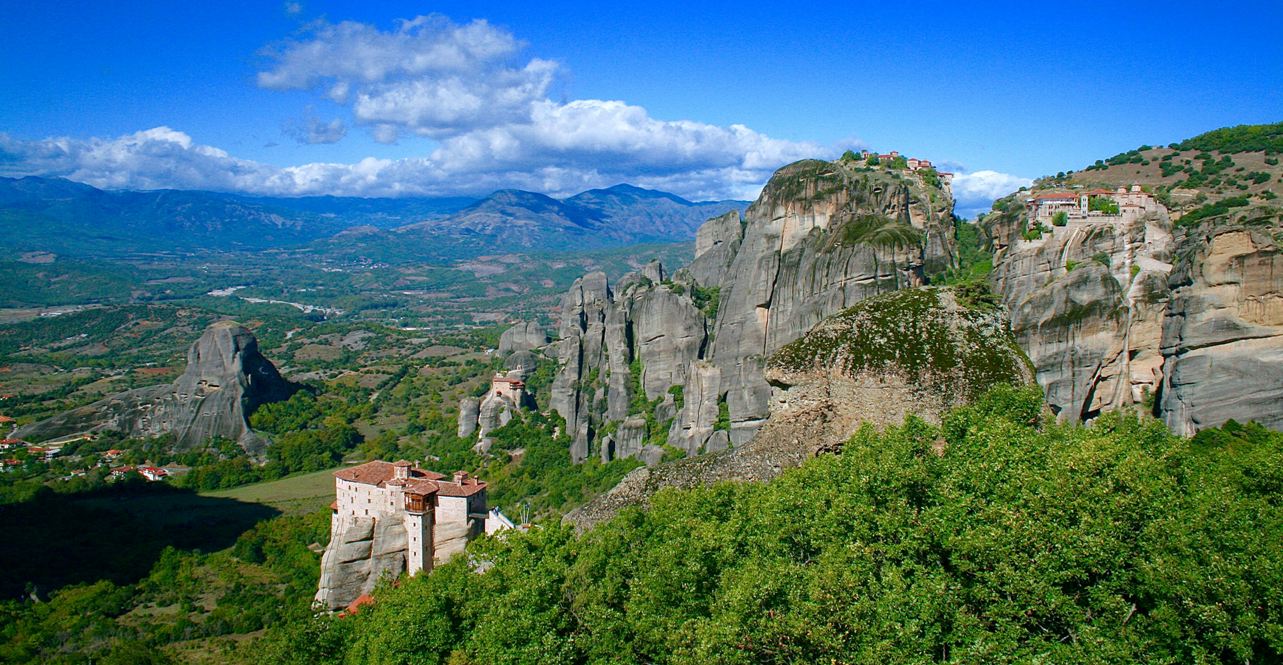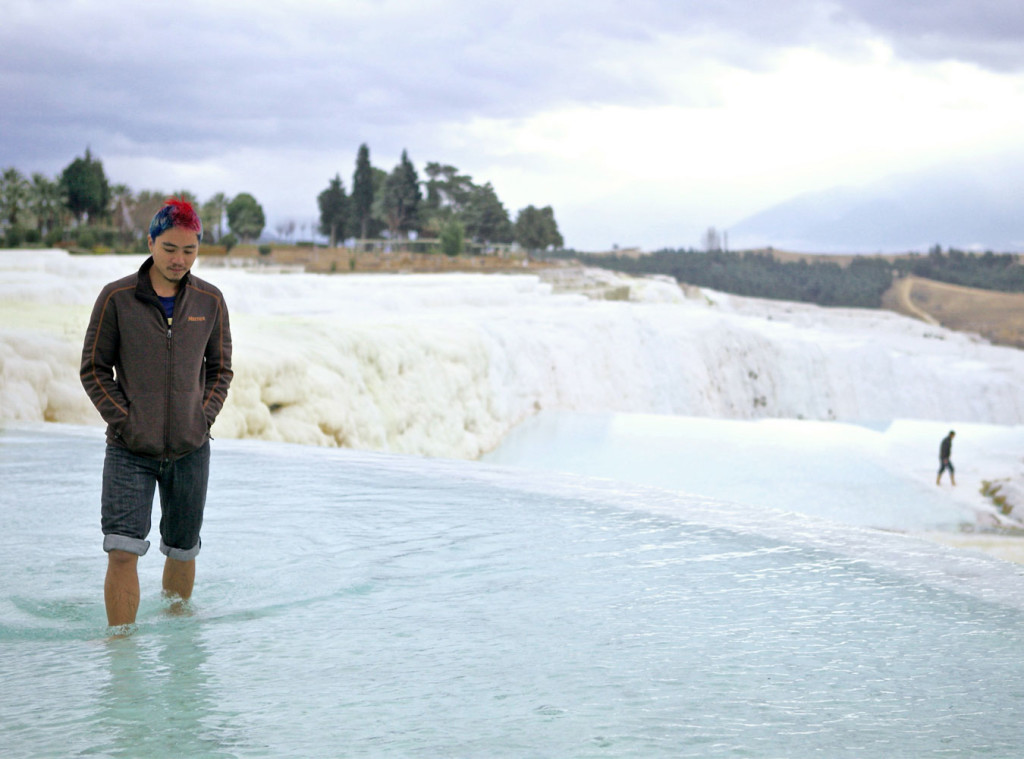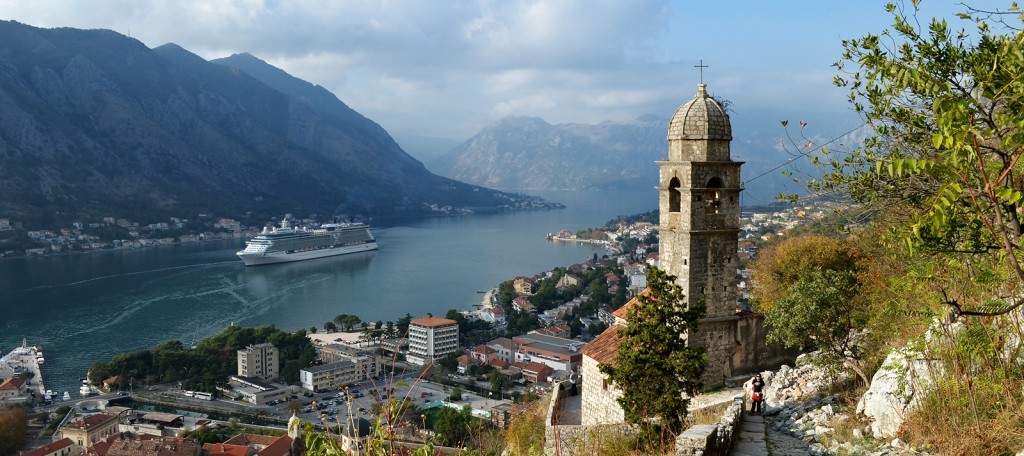[dropcap type=”full” ]I[/dropcap]t was a 4 hours drive from Athens, the sky was full and cloudy, but rain hadn’t broken. Through the clouds, sun rays like streamers, speared the ground. Refreshing October weather, a mild 20°c in the sun, green housed pleasantly in the car. Outside, balls of cotton harvest lined the road with two parallels of puffy white. Some more were whipped up by the wind, swirling in spirals. Mesmerizing stuff.
We rolled by the Greek countryside, passing limestone mountains and olive fields; rows of grapevines and, of course, the harvesting cotton fields. Trucks carrying bails of cotton toiled along the three-lane highway, the middle lane was for overtaking, shared by the oncoming traffic.
As we approached, on a straight road as far as the eye could see (13km straight in fact), the sandstone peaks of Meteora took shape and started to grow. At its base, the town of Kalabáka lined the horizon. We were getting close.
[slider ids=”675,666″ fullwidth=”yes” captions=”yes” ]
Kalambaka & Kastraki
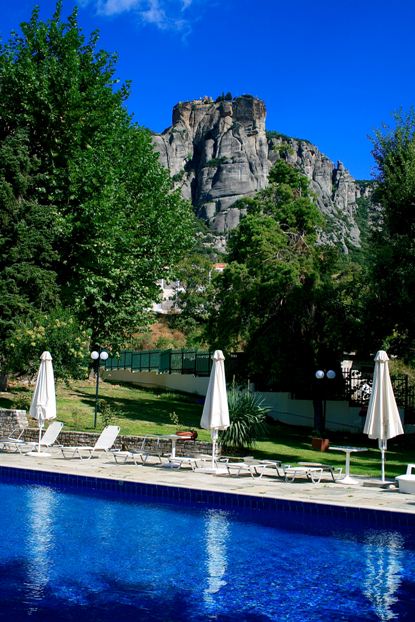 We pulled in at Divani Meteora Hotel, a comfortable 4 star hotel in the middle of town, with a backdrop of Meteora to die for. We were there just for the night so we dumped our gear and headed straight out to explore the town.
We pulled in at Divani Meteora Hotel, a comfortable 4 star hotel in the middle of town, with a backdrop of Meteora to die for. We were there just for the night so we dumped our gear and headed straight out to explore the town.
Kalabáka town (also known as Kalambaka or Kalampaka) was a contemporary town. Unassuming, yet modern, tourism was obviously a main industry with restaurants and accommodations dotting the landscape. Red roofed shop houses of two to three stories lined up along the main street, creating a homely suburban feel. The alleys meandered on a slope; a gentle rise towards the mountain and the sometimes-sharp turn in the small town, never left you disorientated, with such a huge landmark as a guide, an omnipresent behemoth watching down at you.
Further west, tucked between a nest of sandstone summits, was the smaller village of Kastraki. Kastraki (meaning “small castle”) felt more local, eating into the forest trees and scratching the very base of the monoliths.
We waited for mesimeri (Greek siesta between 2-5pm) to pass before heading into the first restaurant that opened for dinner.
[photogrid ids=”679,678,677,668,669,671″ captions=”yes” columns=”four” fullwidth=”yes” ]
The Six Monasteries
The next day we started out early to beat the army of “day tour coaches” from Athens. Scaling the peaks would have been a one-hour trek, but we had a car that made it up in under 5 minutes.
There are 6 Monasteries that are open to the public upon Meteora, connected by circuit road. There is also a plethora of closed and ruined monasteries worth exploring along the way, including a Monk’s prison and a Dragon cave.
Originally settled by monks who lived in caves within the rocks during the 11th Century, as times became more troubled during Turkish occupation, they scaled the inaccessible peaks for security, carrying building materials via a series of ladders and baskets via a rope pulley system. There was a time where the only way to the monasteries were the baskets. A monk replied when asked if they ever replaced the rope, “Of course we do… Whenever it breaks.”
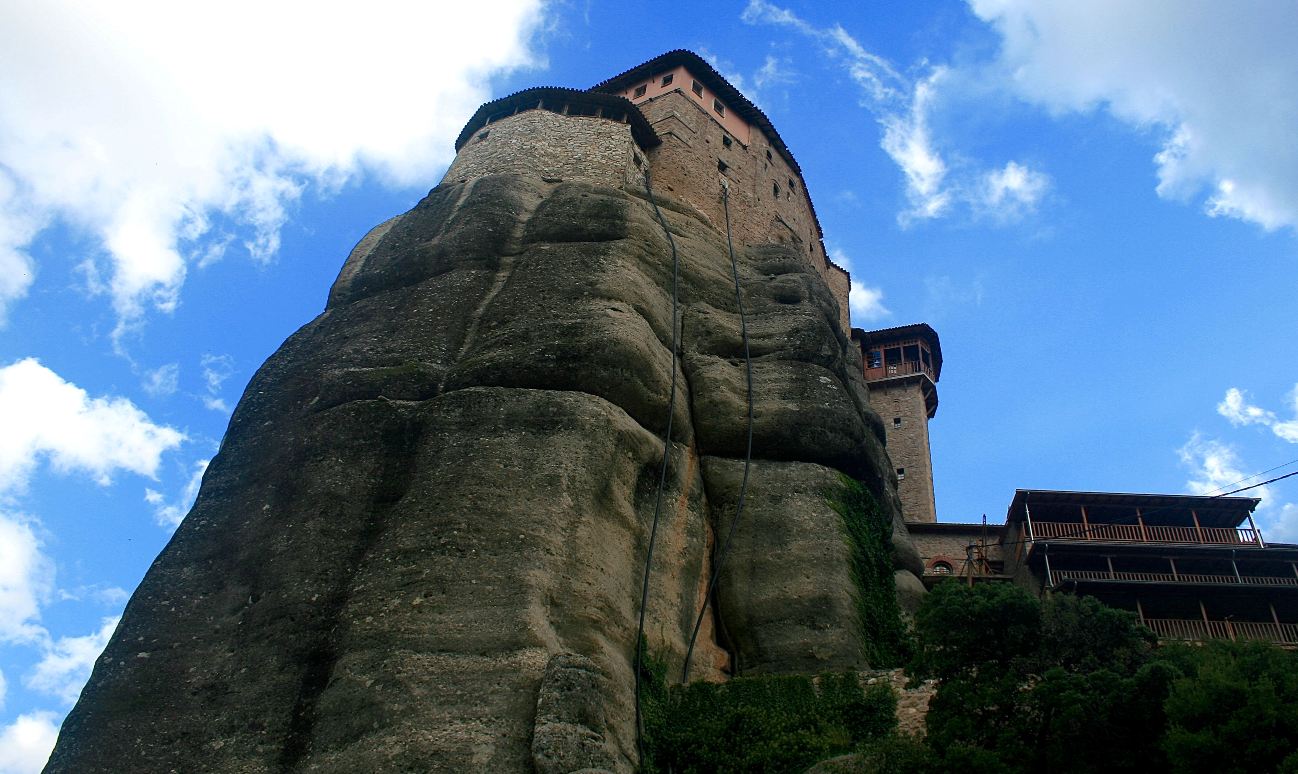
The Holy Monastery of Great Meteron (Megalo Meteoro), is the best known of the Monasteries and is built upon the highest rock. Founded by Athanasios the Meteorite, one of the most well-known figures in Orthodox monasticism, work was begun before 1382 and later completed by the Monk Joasaph. Because the Serbian Emperor Symeon Uros gave the monastery all his wealth and became a monk it became the richest and most powerful of all the monasteries.
Open from 9 to 1 and from 3 to 6. It is closed on Tuesday and Wednesday.
The Holy Monastery of Varlaam was founded in 1517 by Theophanis and Nektarios Apsaradas from Ioanina though the first to establish a monastery here was an ascetic anchorite named Varlaam.
Open from 9am to 1pm and then from 3:30 to 6pm. It is closed on Fridays.
The Monastery of Rousanou was founded in 1545 by Joasaph and Maximos, two brothers from Epirus who built it on the ruins of an even older church. To get to this monastery you cross a small bridge from another peak.
Open from 9am to 1pm and then from 3:30 to 6pm. It is closed on Wednesdays.
The Monastery of St. Nicholas Anapausas (Agios Nikolaos Anapafsas) was built in the 16th Century by Dionysious, the Metropolitan of Larissa and named after an old Patron. The Katholikon is decorated in wall paintings by the renowned Cretan Iconographer Theophanis Bathas-Strelitzas.
Open every day from 9am to 6 pm.
The Monastery of St. Stephen (Agios Stefanos) is the only convent in Meteora and has an unimpeded view of the plain towards Kalambaka. The present Katholikon dedicated to Saint Haralambos was built in 1798. The saint’s skull which was given to the nuns as a gift from Prince Vladislav of Wallachia is kept here.
Open every day from 9 to 1pm and 3 to 5 pm.
The Monastery of Agia Triada or Holy Trinity was founded by the monk Dometius in the 15th century and was the monastery used for the James Bond film For Your Eyes Only. To get to the monastery you walk up 140 steps cut into the rock, past the church of Saint John the Baptis with its wall paintings from 1682.
Open from 9am to 1pm every day except Thursday.
We tarried on the hills till the sun was ready to set. Dragging our feet down from the heights, we watched as rock climbers set up camp mid way up the peaks, ready to settle in for the night. Ours was to be a four-hour journey back to Athens, thoughts lingering on the grand pinnacles of Meteora.
[photogrid ids=”686,685,684,683,682,681″ captions=”yes” columns=”four” fullwidth=”yes” ]
- Nice, The French Riviera, France - November 11, 2015
- The Tsukiji Fish Market Tuna Auction Experience - October 25, 2015
- The Sandstone Peaks of Meteora (Greece) - September 28, 2015
